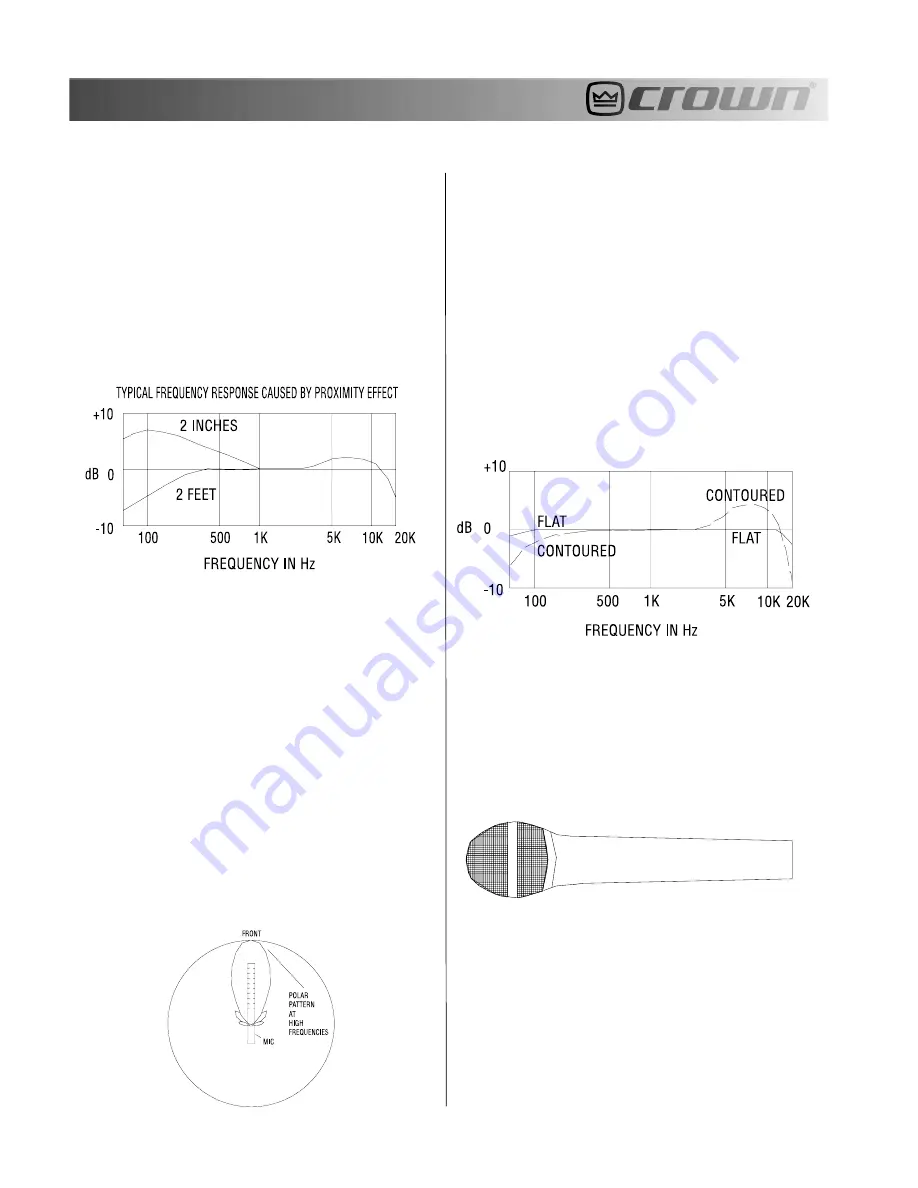
4
Most unidirectional mics have
proximity effect
, a
rise in the bass when used up close. Figure 4 is a
frequency-response graph that illustrates proxim-
ity effect. When the microphone is 2 feet from the
sound source, its low-frequency response rolls off.
But when the microphone is 2 inches from the sound
source, its low-frequency response rises, giving a
warm, bassy effect.
Fig. 4 – Proximity effect.
A special type of unidirectional microphone is the
variable-D
type. Compared to a standard single-D
directional microphone, the variable-D has almost
no proximity effect, so it sounds natural when used
close up. The variable-D type also has less handling
noise and pop.
The most highly directional pattern is that of the
shotgun
or
line
microphone (Figure 5). The shot-
gun microphone is used mainly for distant miking
(say, for dialog pickup where you want the mic to
be off-camera). It is highly directional at high
frequencies and hyper-cardioid at low frequencies.
The longer the shotgun mic is, the more directional
it is at mid-to-low frequencies.
Fig. 5 – Shotgun microphone and its polar pattern.
FREQUENCY RESPONSE
Each microphone has a different frequency re-
sponse, which indicates the tonal characteristics
of the microphone: neutral, bright, bassy, thin, and
so on. Figure 6 shows two types of frequency re-
sponse: bright (contoured) and flat. A bright fre-
quency response has an emphasized or rising high-
frequency response, which adds clarity, brilliance,
and articulation. A flat frequency response sounds
natural.
Fig. 6 – Frequency response.
FORMS OF MICROPHONES
Microphones come in many shapes that have dif-
ferent functions:
Handheld
(Figure 7). Used in the hand or on a mic
stand. An example is the Crown CM-200A cardioid
condenser microphone.
Fig. 7 – Handheld microphone.

































